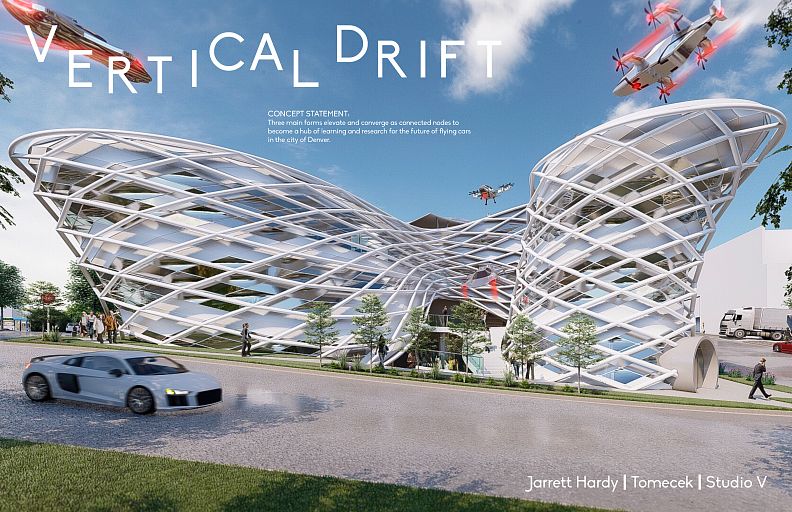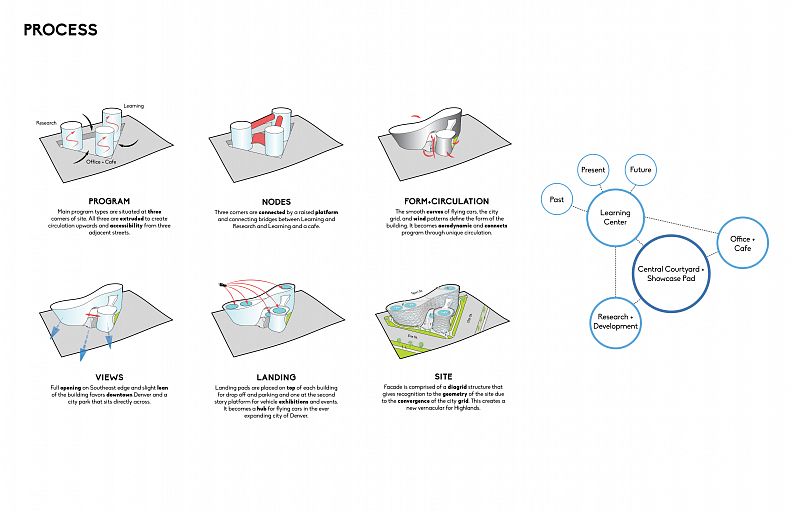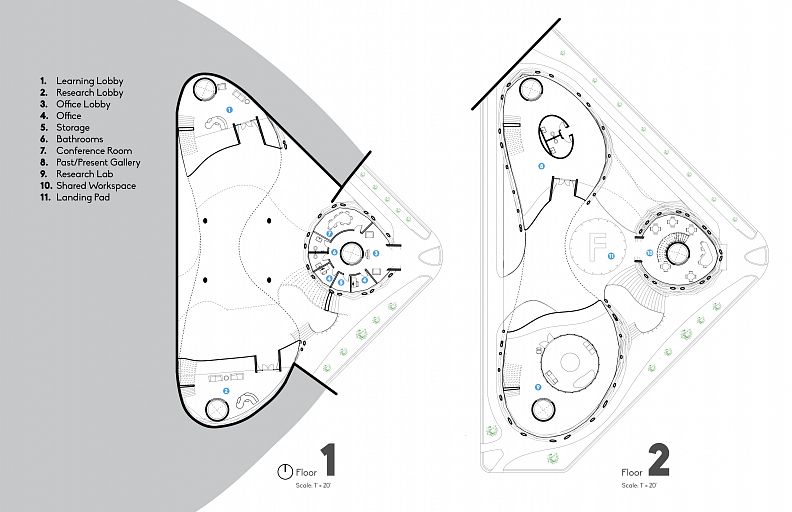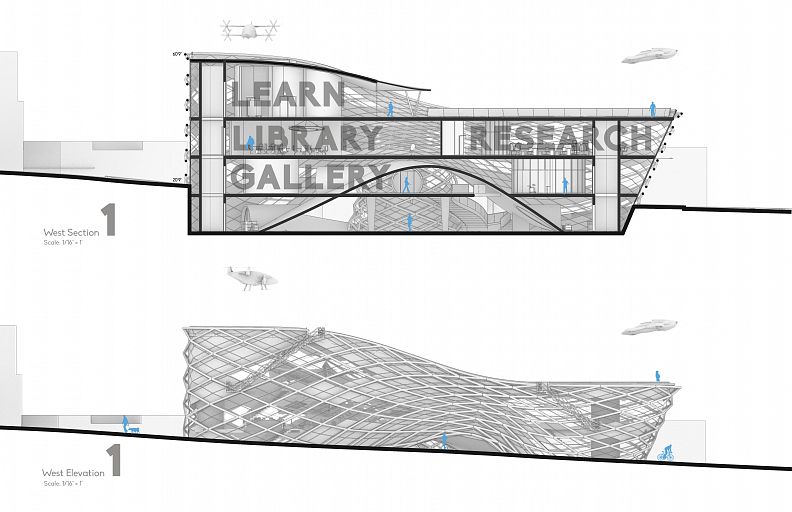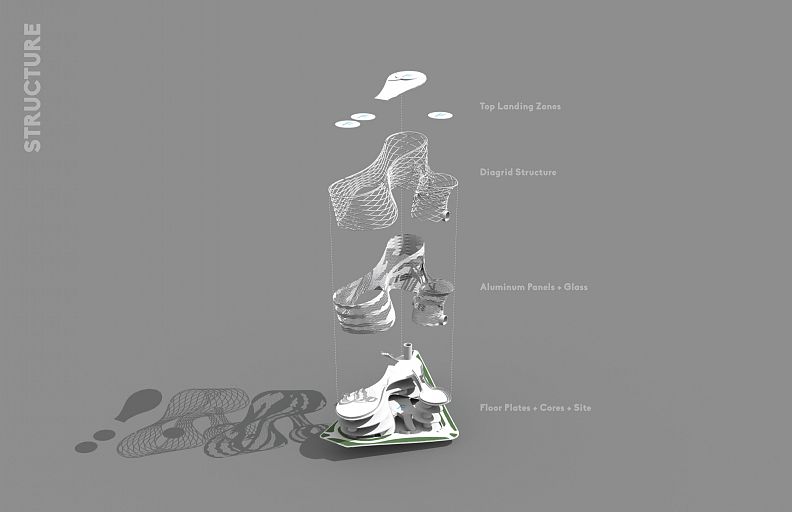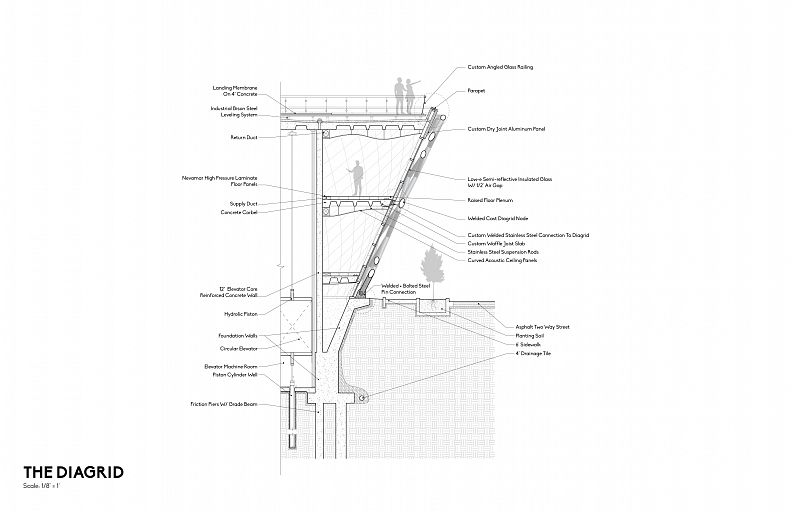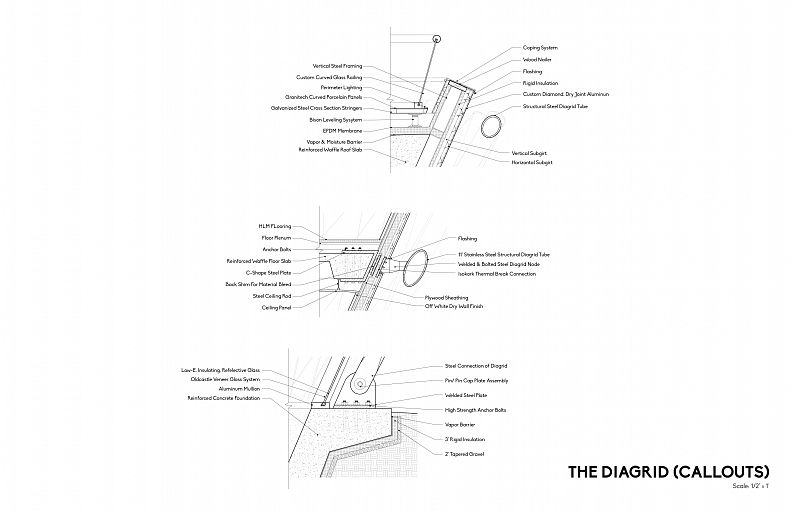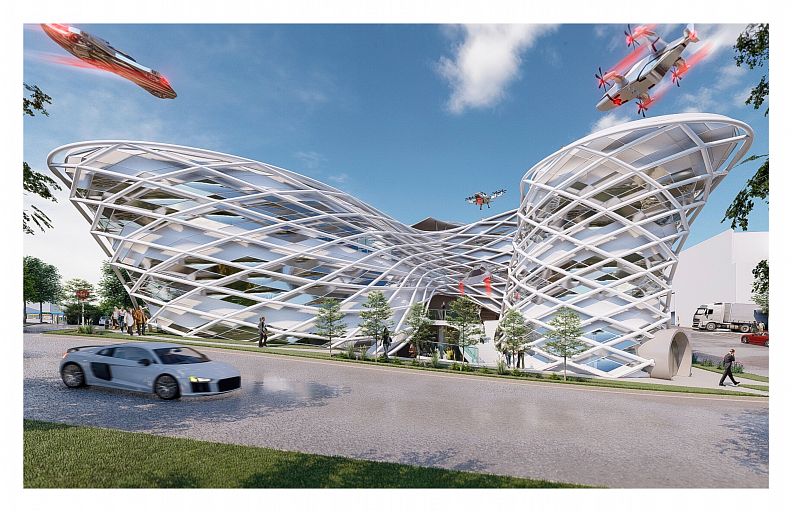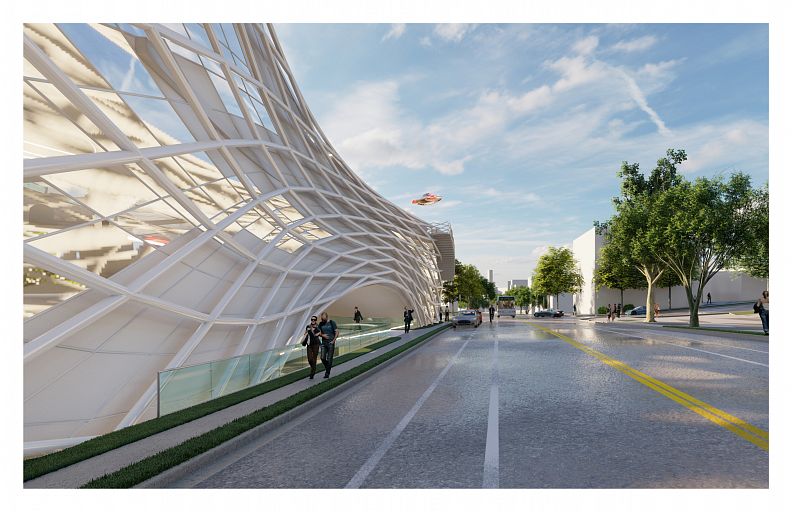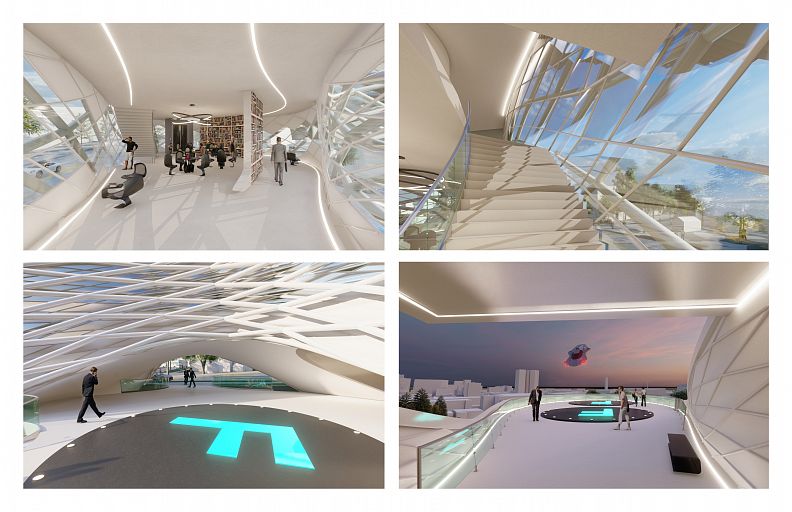Vertical Drift

Project idea
To begin, my Bachelor's capstone studio was tasked with creating a place of learning for any topic of our interest. The site is located in Denver, Colorado, which is a rapidly growing city. The triangular site is surrounded by social, residential, and park zones. As a forward thinker and admirer of Denver, I decided to focus on the future of the city and transportation. I envision that one day humans will be able to get into a personal vehicle and fly to their destination. I call these hovering personal vehicles (HPV). My concept followed this method of transportation and their way of connecting through nodes. In the end, I designed a structure that would become a prototype and catalyst for Denver and flying transportation. It would also engage and connect the neighborhood. This hub for learning is dynamic, sensitive, beautiful, and fluid in nature.
Project description
As mentioned above, the main objective of this project was to design a place of learning in the city of Denver. We were given a complex triangular site that was constrained on all three sides with 18 feet of elevation change from top to bottom.
This led my design to be comprised of three main forms (research center, learning center, office) that connect through bridges and platforms. I envision my design to host researchers that would advance our methods of transportation. The public would access the learning side and be educated on what our future looks like and how these modes of transportation are being designed. At the top of these forms, HPVs can land and take off to connect with the rest of the city while the rest of the structure relates to the surrounding three sides in significant ways. The west side is curved upwards to allow users to flow in and out of the main adjacent street. The southeast side opens up to a park and views of downtown Denver, also enabling landing and takeoff on a central, showcase landing platform. The northeast side includes a grass mound that flows into the public space below the main landing platform. This would enable community gatherings, workshops, special events, and much more.
The idea of nodes led me to explore, study, and understand their qualities in a parametric facade that would be unique and dynamic, but also respect the city. We were asked to include some sort of library or space for learning, office space, and community areas. As secondary and tertiary spaces, we were asked to add lobbies, restrooms, mechanical, storage, and any other spaces we might need for our building.
Within the design, I used grasshopper and Rhino to develop the facade. The project was later taken into Revit in order to analyze structure and complete details. Lumion was used for the renderings while the Adobe suites were used for drawings and PDFs.
Please note that the images included here are placed in such a way to tell the story of my design. Story telling is a big part of who I am as a student and future architect. Please see my morphology diagrams for narrative of the form and concept as well.
Technical information
The main system developed was a steel diagrid framing system that is both symbolic and functional. This system was coupled with 3 main concrete cores that allowed the interior of my design to be column free. Dry joint aluminum plates, white finished steel, and custom cut glass panels were used for the facade. The interior is comprised of waffle slab floor plates that are able to span greater distances. ADA is addressed by including hydraulic elevators that sit within the 3 main cores. Heating, cooling, and ventilation is addressed by using floor plenums and an efficient HVAC system that would feed the whole building. To hold it all down, piers would be drilled deep into the earth to give the structure complete rigidity.
Please refer to wall section and callouts for exact configuration of structure and details.
Co-authors
N/A
